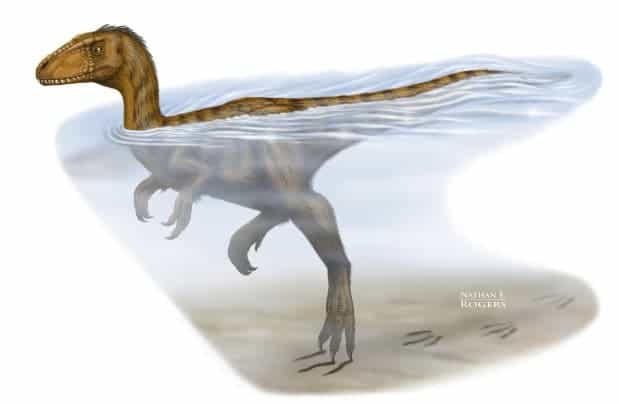
A University of Alberta researcher has identified some of the strongest evidence ever found that dinosaurs could paddle long distances. (c) Nathan Rogers
While dinosaur walking and locomotion is a subject of great interest and study for paleontologists, whether some could swim too is a controversial matter. Recent evidence found by an US graduate student sheds new light on the subject and suggests some dinosaurs could paddle for long distances through water with coordinated leg movement.
Scott Persons, student at University of Alberta, observed some unusual claw marks on fossilized rocks found at a river bottom while on an expedition along with an international group of researchers in China’s Szechuan Province. The marks were peculiar because they stretched over distances in patterns that suggests that they were left only by the tips of a two-legged dinosaur’s feet.
By carefully analyzing the claw marks, the researchers inferred that dinosaurs swam along in the river, and just their tiptoes touched the bottom of the river, providing one of the most tantalizing evidence that dinosaurs could swim with coordinated leg movement.
“It is not a surprise some could swim, but what is significant is that they would swim for quite a while,” said Persons, whose research was published Monday in the journal Chinese Science Bulletin.
The traces were of a carnivorous two-legged dinosaur. The researcher roughly estimates the dinosaur to be up to one meter at the hip.
“We found evidence of six or eight individual animals, all headed in the same direction, moving together as if they were part of a herd,” Persons said. “It looks as if they used the river bank as a superhighway. They were actually quite buoyant.”
Fossilized rippling from currents and evidence of mud cracks indicate the river went through dry and wet cycles, the study shows. Most likely the dinosaurs were forced during these wet seasons to cross and navigate water stretches.









